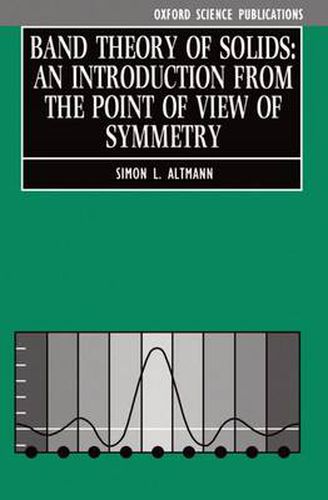Readings Newsletter
Become a Readings Member to make your shopping experience even easier.
Sign in or sign up for free!
You’re not far away from qualifying for FREE standard shipping within Australia
You’ve qualified for FREE standard shipping within Australia
The cart is loading…






The structure of much of solid-state theory comes directly from group theory, but until now there has been no elementary introduction to the band theory of solids which adopts this approach. This book provides such an introduction, employing only the simplest and most basic of group theoretical ideas, and emphasizing the significance of symmetry in determining many of the essential concepts used in the subject.\n\nGiven the extensive training of chemists in applying group theory, there is no quicker entry into the subject than by means of the approach used in this book. Many topics were chosen with the needs of chemists in mind, and many of the examples have a chemical flavour. Numerous problems are included which enable the reader to apply the major ideas and to complete some parts of the treatment. Chemists will find this a valuable introduction to band theory, and the book will also appeal to all physical scientists who would like to go a little beyond the elementary treatments so far available.
$9.00 standard shipping within Australia
FREE standard shipping within Australia for orders over $100.00
Express & International shipping calculated at checkout
The structure of much of solid-state theory comes directly from group theory, but until now there has been no elementary introduction to the band theory of solids which adopts this approach. This book provides such an introduction, employing only the simplest and most basic of group theoretical ideas, and emphasizing the significance of symmetry in determining many of the essential concepts used in the subject.\n\nGiven the extensive training of chemists in applying group theory, there is no quicker entry into the subject than by means of the approach used in this book. Many topics were chosen with the needs of chemists in mind, and many of the examples have a chemical flavour. Numerous problems are included which enable the reader to apply the major ideas and to complete some parts of the treatment. Chemists will find this a valuable introduction to band theory, and the book will also appeal to all physical scientists who would like to go a little beyond the elementary treatments so far available.